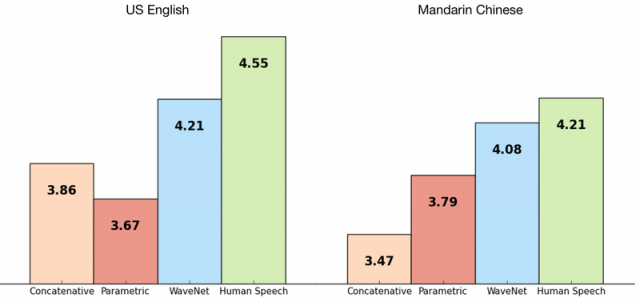Whatever you may think
about the mechanical voices foisted upon the world because of Google Voice
Search and Siri, you're unrealistic to confuse them for human voices. For a
considerable length of time, the best in class in PC discourse combination has
been stuck at a genuinely low level. In any case, new programming called
WaveNet, from the brainiacs at DeepMind, is setting a high watermark in the
field of discourse union and giving AI a voice shockingly like that of a human.
For a considerable
length of time apply autonomy have talked about something many refer to as the
uncanny valley – the frightening feeling one gets while watching a robot that
is too unthinking to possibly be mixed up for a human, however not exactly sufficiently
mechanical to be unmistakably automated, either.
Maybe one reason there
has been no parallel idea for automated discourse is that to date, no discourse
synthesizer was fit for accomplishing a quality that approached enough to a
human as to be irritatingly comparable. With DeepMind's WaveNet, we might
witness the rise of something like an uncanny waveform, an automated voice
sufficiently close to our own particular as to be unmistakably dreadful. On the
other hand like me, you may simply celebrate that at long last there's promise
for a digital book peruser that doesn't seem like the re-enlivened cadaver of a
1980's Commodore PC.
The mystery sauce behind
this new standard in automated discourse, unexpectedly enough, is manmade
brainpower — but with a little assistance from some brilliant programming
engineers en route.
We should get used to
this situation, as it looks progressively that headways made in things like
mechanical technology and AI will be acknowledged with the assistance of
manmade brainpower itself. While this ethical input circle still incorporates
human middle people, a pattern towards self-enhancing AI might be in the offing
— alongside all the associative existential dangers this betokens. In any case,
we should investigate WaveNet and perceive how counterfeit consciousness has
empowered and is, without a doubt, the spine behind DeepMind's new discourse
synthesizer.
To date, most discourse
synthesizers were of two sorts — concatenative content to discourse and
parametric content to discourse. Concatenative content to discourse is the
technique behind the alleged "amazing" discourse synthesizers
utilized by Google Voice and Siri. It gives a more sensible sound by utilizing
extensive sound documents of genuine individuals' voices, hacked up and
redesigned to shape whatever word the PC is articulating. The drawback is that
it is hard to shading the discourse with changes of feeling or accentuation.
The option strategy,
parametric discourse, utilizes a standard based framework found by applying
measurable models to discourse designs. The stilted and mechanical sounding
discourse synthesizers are for the most part of this last sort, since they
depend upon the PC to create the sound flag instead of recordings of genuine
human voices.
The WaveNet framework
can be considered as a change upon concatenative content to discourse, in that
despite everything it utilizes recordings of genuine human voices. Yet, rather
than slashing these up and rearranging them in the old way, it utilizes a manufactured
neural system to create engineered expressions based upon the voices it was
prepared with. The drawback is that this framework is computationally serious.
Demonstrating crude sound normally requires 16,000 specimens for each second,
with every example being impacted by all the past ones. This is well past the
handling force of a common cell phone, yet not incomprehensible for GPUs like
Nvidia's DGX-1 profound learning supercomputer.
DeepMind has some sound
examples posted up on its WaveNet page on the off chance that you need to hear
what it sounds like. Until further notice, while you're unrealistic to
experience WaveNet out in the wild, it's not unfathomable that this framework
will some time or another force the voice on your digital book peruser or a
savvy home console — that is, if a recursive self-enhancing AI hasn't crushed
mankind first.



Post a Comment